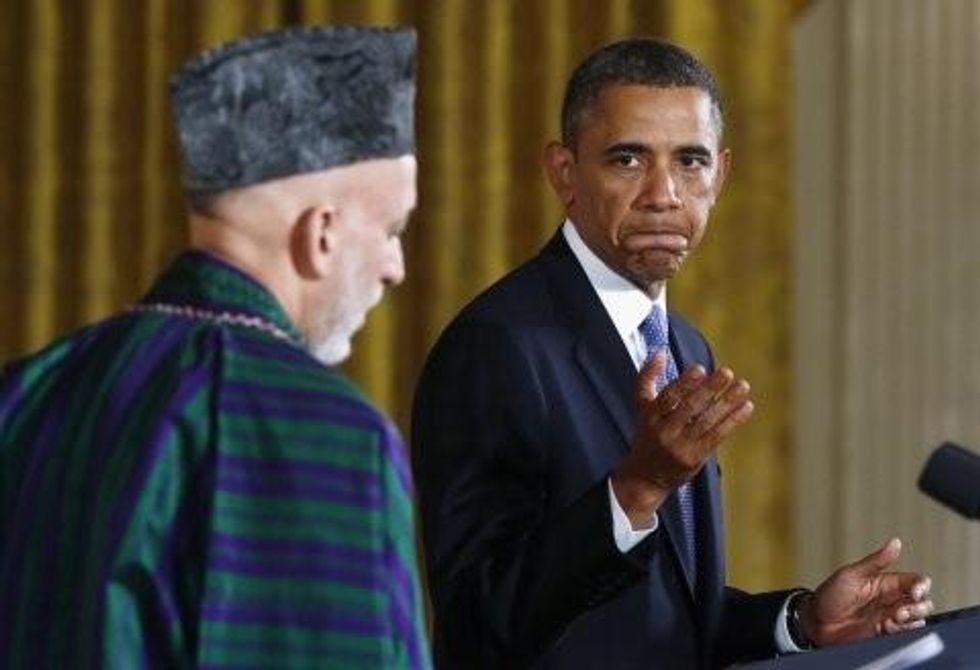Washington and Kabul have, for endless months, been performing a strange pas de deux over the issue of American withdrawal. Initially, the Obama administration insisted that if, by December 31, 2013, Afghan President Hamid Karzai didn't sign a bilateral security agreement the two sides had negotiated, the U.S. would have to commit to "the zero option"; that is, a total withdrawal from his country--not just of American and NATO "combat troops" but of the works by the end of 2014. Getting out completely was too complicated a process, so the story went, for such a decision to wait any longer than that. Senior officials, including National Security Adviser Susan Rice, directly threatened the Afghan president: sign or else. When Karzai refused and the December deadline passed, however, they began to hedge. Still, whatever happened, one thing was made clear: Karzai must sign on the dotted line "in weeks, and not months," or else. Washington couldn't possibly wait for the upcoming presidential elections in April followed by possible run-offs before a new Afghan leader could agree to the same terms. When, however, it became clear that Karzai simply would not sign--not then, not ever--it turned out that, if necessary, they could wait.
And so it goes. At stake has been leaving a residual force of U.S. and NATO trainers, advisors, and special operations types behind for years to come, perhaps (the figures varied with the moment) 3,000-12,000 of them. With time, things only got curiouser and curiouser. The less Karzai complied, the more Obama administration and Pentagon officials betrayed an overwhelming need to stay. In the 13th year of a war that just wouldn't go right, this strange dance between the most powerful state on the planet and one of the least powerful heads of state anywhere, to say the least, puzzling. Why didn't the Americans just follow through on their zero-option threats and pull the plug on Karzai and the war? Obviously, fear that the Taliban might gain ground in a major way after such a departure was one reason.
In January, David Sanger and Eric Schmitt of the New York Times provided another. They reported that a paramount issue for Washington was "concerns inside the American intelligence agencies that they could lose their [Afghan] air bases used for drone strikes against al-Qaeda in Pakistan." It might, it turned out, be difficult to find other regimes in the region willing to lend bases in support of the U.S. drone campaigns in the Pakistani tribal areas and possibly Afghanistan as well.
Today, TomDispatch regular Mattea Kramer provides a third potential reason in her striking explanation of just how the Pentagon has been managing to avoid serious sequestration cuts. It turns out that billions of dollars in extra funding are being salted away in a supplementary war-fighting budget that Congress grants the U.S. military, which is subject to neither cuts nor caps. But here's a potential problem: that budget relies on the existence of an Afghan War. What if, after 2014, there isn't even a residual American component to that war? Not that the Pentagon wouldn't try to keep "war budget" funding alive, but it's clearly a harder, more embarrassing task without a war to fund.
That's just one of the questions that emerges from Kramer's clear-eyed look at whatconce you've read her piece, "The Pentagon's Phony Budget War"--can only be considered the Pentagon's sequestration con game. It's a shocking tale largely because, while the budget figures are clear enough, you can't read about them anywhere except at TomDispatch (or maybe at Common Dreams).
